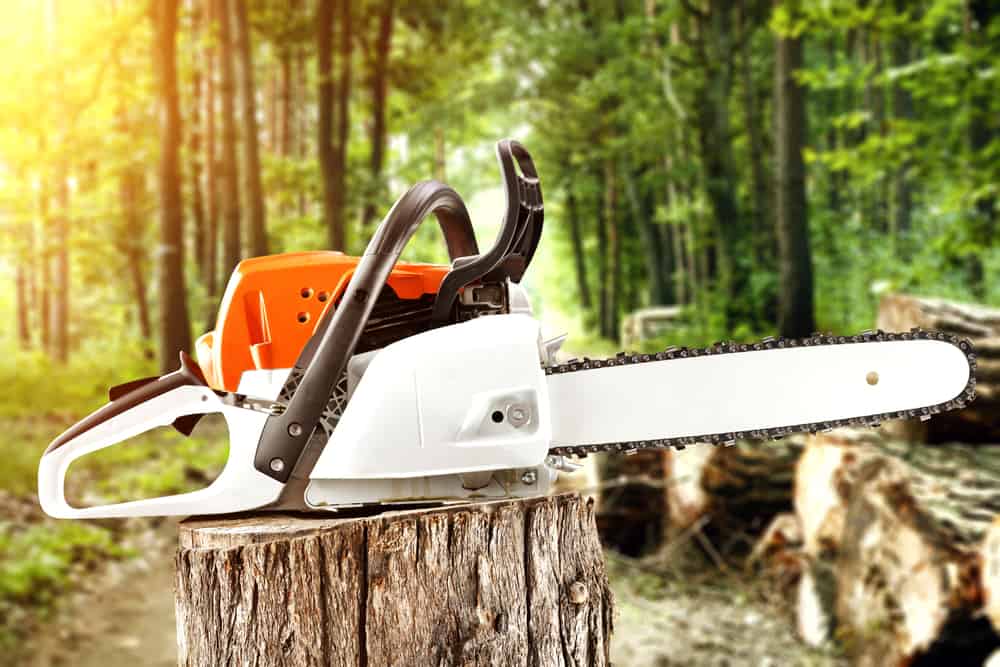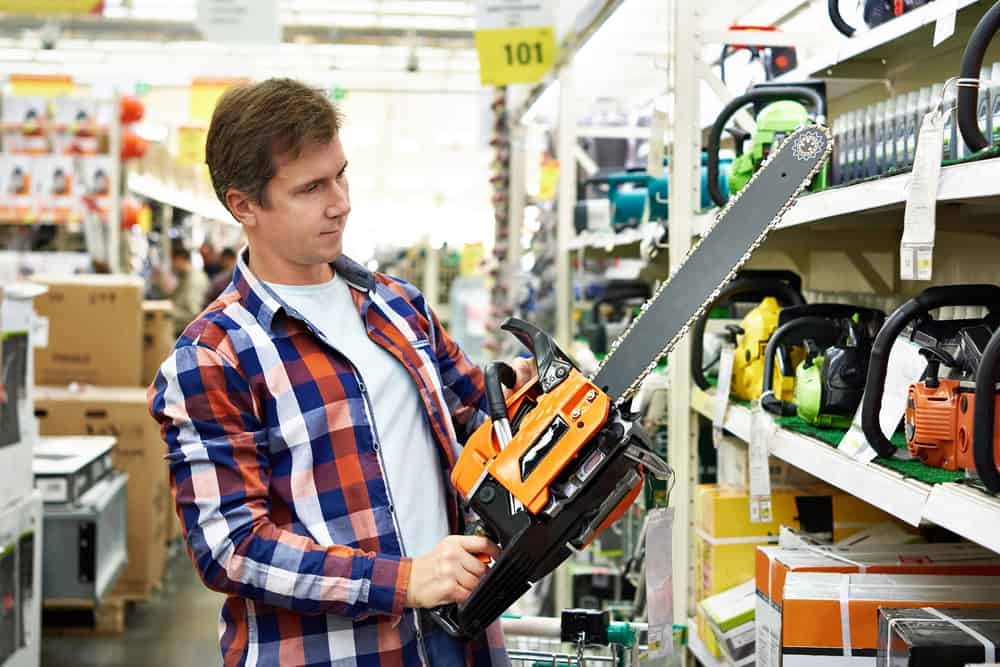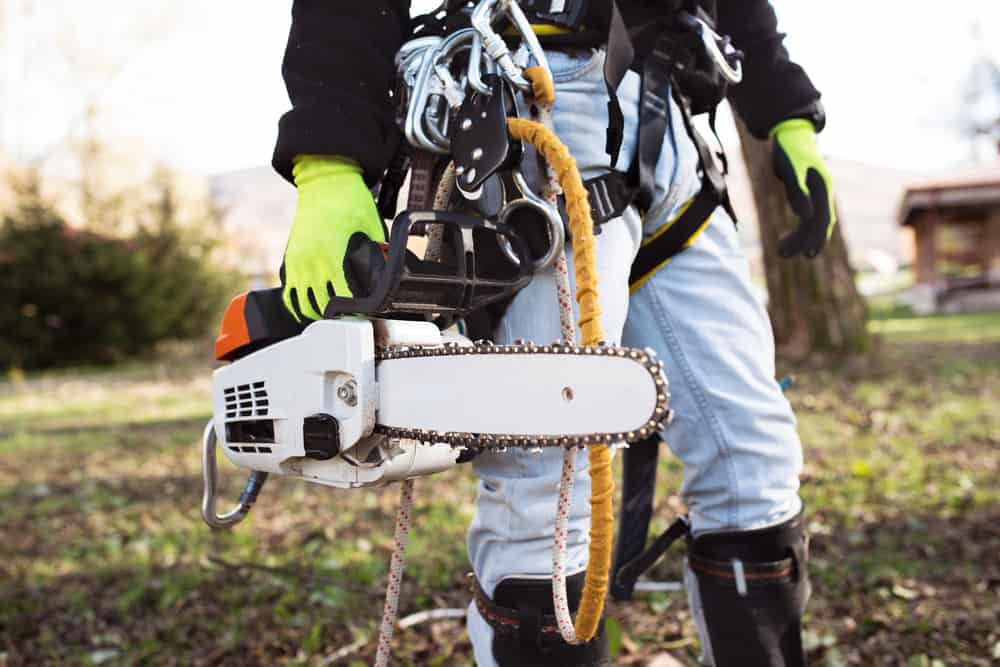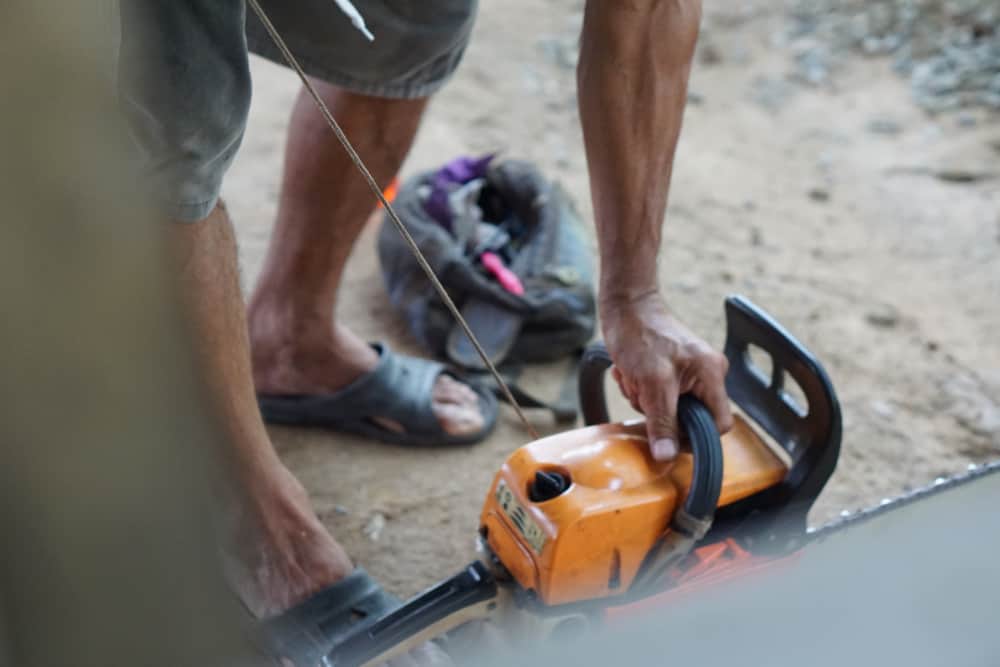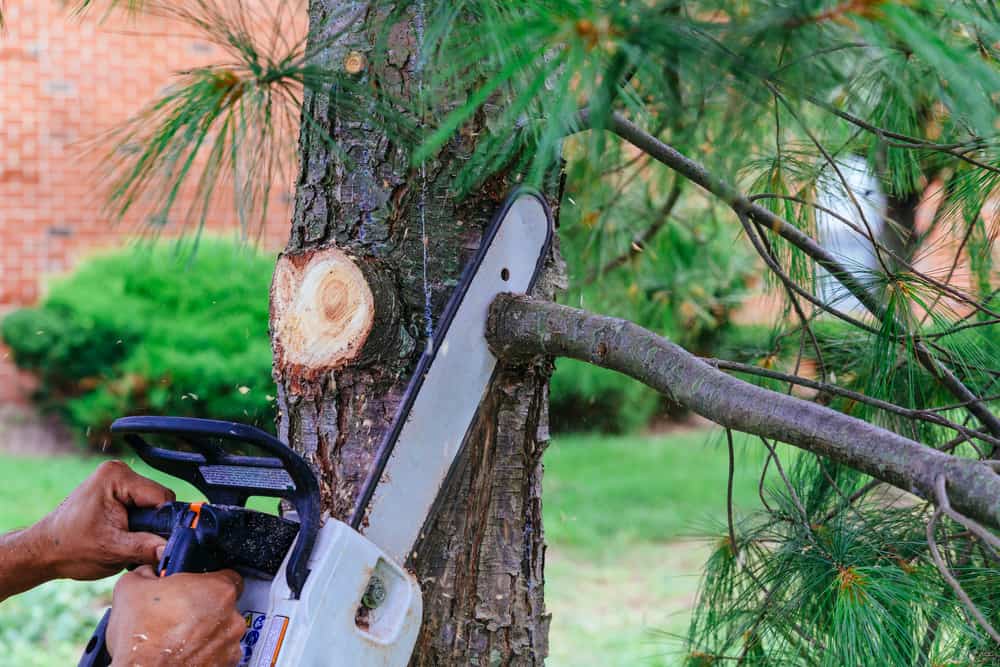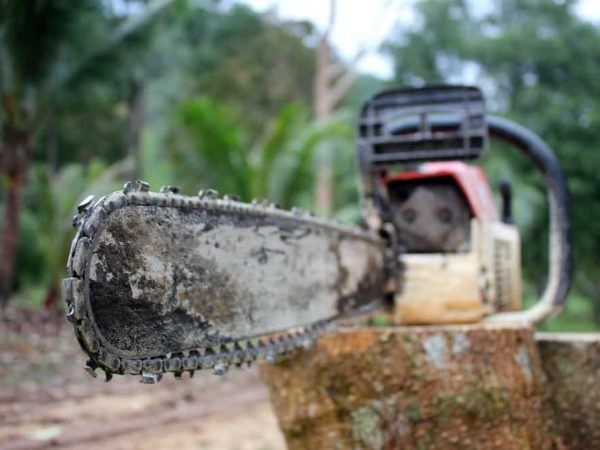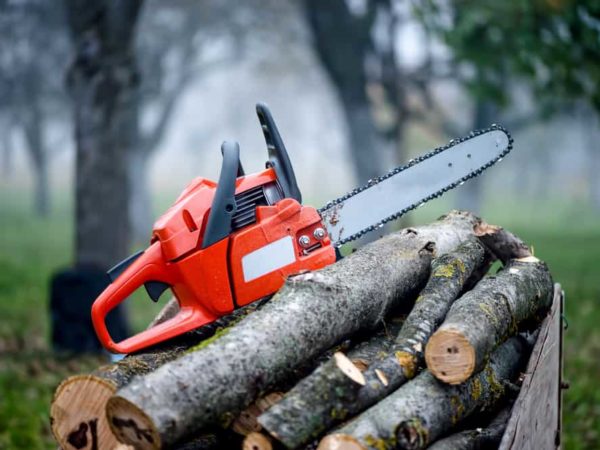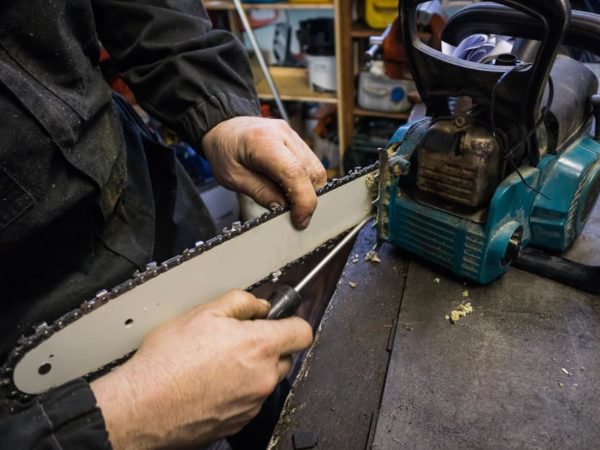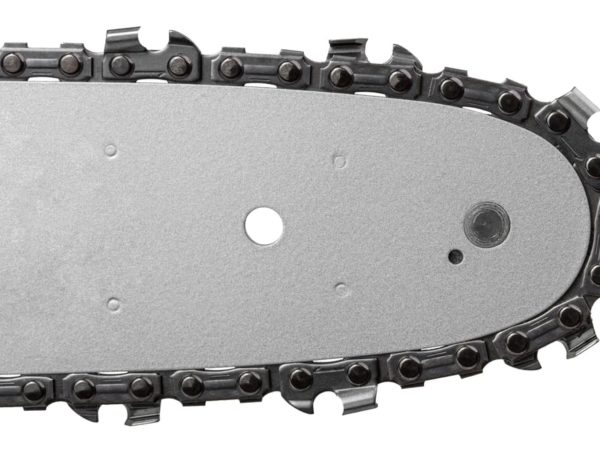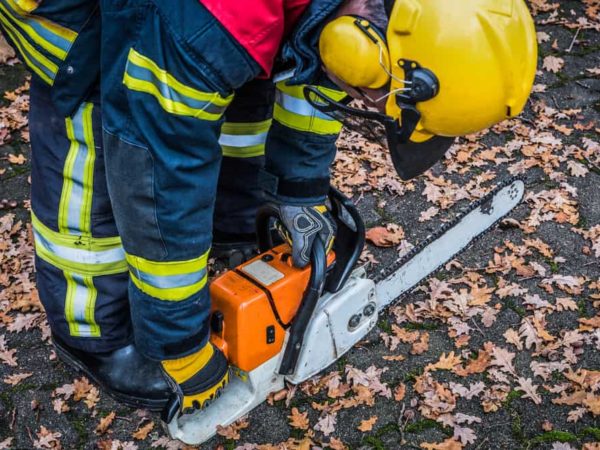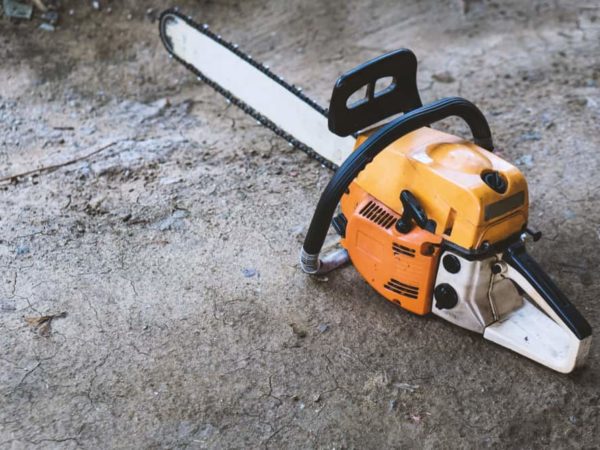If you regularly need to cut wood or manage a piece of land with trees on it, a chainsaw is an invaluable tool. It allows you to fell trees, prune branches and chop up timber in no time, and it is something that many people can’t do without.
However, chainsaws are among the most dangerous tools you can own, and without being too graphic, chainsaw injuries can be horrific – which is why safety when using one should always be your primary concern.
If you want to reduce the danger of using one of these highly versatile tools, here are our top 9 tips to use a chainsaw safely.
If you want more detailed information about chainsaw safety, here’s a great video that goes into the topic in some depth.
Table of Contents
1. Read the manual
Although some people might feel it is beneath them or not “manly”, if you are operating a new or unfamiliar chainsaw, the first step should always be to read the instruction manual. This will give you all the information you need about any safety precautions or operating tips that are specific to that particular model.
2. Choose the right chainsaw
Make sure you select an appropriate tool for the job and also for you. Using a large, powerful chainsaw that is too big for you or too powerful for your level of skill and experience can be extremely dangerous, so choose one that is suitable for you.
Similarly, trying to cut large trees with a chainsaw that is too small can also be dangerous as you may end up trying to cut at unsafe angles. Make sure you have one that is up to the job you need it for.
3. Wear correct protective equipment
Using a chainsaw is inherently dangerous. Quite apart from the damage the blade can do to unprotected flesh, there is the risk of flying wood chips, falling branches and much more. For these reasons, you should make sure you always wear the correct protective equipment.
A flying piece of wood can permanently damage an eye or even blind you so make sure you always wear protective goggles – specs or shades are not good enough.
Similarly, the sound levels can cause permanent hearing loss so always wear ear protection – even when using electric corded chainsaws or battery powered chainsaws.
Tough work gloves are essential to protect your hands from flying woodchips, and you should wear strong work boots too, preferably with steel toecaps to protect your feet if anything falls on them.
Finally, consider wearing a hardhat with a face screen to protect your head and face from falling timber and even kickbacks. Wearing chainsaw chaps can also help protect you from chainsaw wounds in the case of a kickback and is highly advisable.
4. Check area
Check the area where you will be working for hazards. If you are felling a tree, make sure it is not going to fall onto powerlines, buildings or people, all of which can be disastrous. Similarly, make sure no kids or pets are around that can inadvertently get in the way of your work.
5. Check chain
It is always important to check the chainsaw chain before you start working. For safe operation, chainsaw chains need to be well maintained. If the cutting teeth are not sharp, the chain may not cut smoothly, which will make the work more difficult.
However, more serious than this, if the teeth are not sharpened, they are more likely to snag and “bite”, increasing the chances of dangerous kickbacks.
Similarly, the rakers (or depth gauges) need to be filed to the correct height. Too long and the saw won’t cut properly, but too short and again, you significantly increase the risk of the chain biting and kicking back – a highly dangerous situation.
Once you are sure the chain is in good working condition, make sure it is also tightened to the correct tension. Some chainsaws feature toolless tensioning, but with others, you will have to make sure you have the correct tools with you.
6. Starting
There are two safe ways to start a chainsaw. The first is to place it on the ground and to hold it firmly with one hand while you pull the starter with the other.
The second is to hold it between your legs. Place one hand firmly on the handle and pull the starter with the other.
It goes without saying that if you use this second technique, the blade should not be between your legs. You might imagine that nobody would be stupid enough to try to start a chainsaw with the blade between his legs – but this video would suggest otherwise (don’t worry, he doesn’t manage).
Never drop-start a chainsaw – there’s a reason why this technique is a safety violation in many states.
7. Hold firmly
Always hold a chainsaw firmly in two hands. Remember, when operating a chainsaw, dangerous kickbacks are an ever-present risk and a strong two-handed grip is one of the best defenses you can have against this.
Some experienced chainsaw operators will sometimes use their saw with one hand while holding branches with the other. This technique is possible but is best avoided by novices since the result of a kickback can be devastating.
8. Be aware of tension and where a tree may fall
Be aware that branches may be under tension, and if you cut through one, the pressure may be released, causing the branch to smack into you like a catapult.
Pay attention to the tension that branches you are cutting may be under and change your position if the think a branch is about to snap back and hit you.
Also, pay attention to where a tree you are felling may fall – you certainly don’t want it falling on top of you.
9. Never use a gas chainsaw indoors
Gas tools give off harmful emissions including CO2, and if you use them in an unventilated area, the build-up of this gas can be fatal. If you are operating a gas-powered machine, make sure you only do so outdoors in a well-ventilated area.
Safety first, always
Whenever using any kind of power tool, safety should always come first – but with chainsaws, this is perhaps more important than with any other kind. However, as long as you use your common sense and always take the proper safety precautions, there’s no reason why you can’t use chainsaws for many years without ever having a serious accident.
Don’t forget to pin it!

